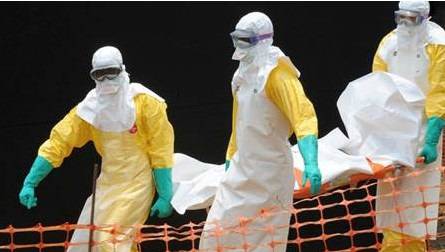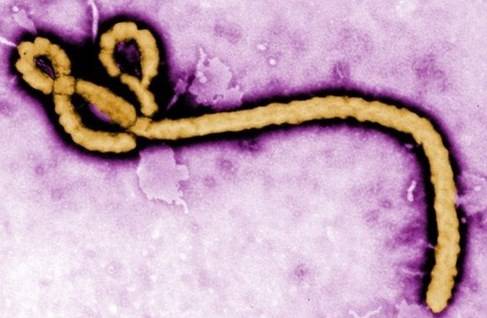Protecting Shippers from Ebola Outbreak
IMO Response to Ebola Outbreak
The IMO have reacted quickly in response to the international emergency recently declared by the World Health Organization (WHO) over the Ebola outbreak in West Africa.
In September the IMO issued an international circular ‘3484’ calling for a united response from the shipping industry to contain the virus. Specifically it calls for ship operators to define 'measures to reduce the risk of exposure' if they are likely to have ships trading to and from ports in Ebola-affected States.
Ebola is a sickening disease with fatality rates of ~70% expected and 1.4 million deaths predicted by January 2015. Here's the extracts from IMO circular 3484 that shipowners need to be aware of:
"In the event that a seafarer, passenger, or other person has stayed in the areas where EVD cases have recently been reported, he or she should seek medical attention at the first sign of illness (fever, headache, achiness, sore throat, diarrhea, vomiting, stomach pain, rash, red eyes, and in some cases, bleeding). Early treatment can improve prognosis."
"Any person with an illness consistent with EVD, or any person who has had contact with or is confirmed as having contracted EVD should not be allowed to join a ship or travel internationally unless that travel is part of an appropriate medical evacuation. In any event, all persons are advised to avoid such contacts and routinely practice careful hygiene, like thorough hand-washing."
Notably the circular says, "Non-affected countries need to strengthen the capacity to detect and immediately contain new cases, while avoiding measures that will create unnecessary interference with international travel or trade."
This makes it essential that each internationally trading vessel can display a rigorous and well thought out protection plan for the crew. Failure to do so could mean that future restrictions are possible on that vessel’s ability to trade internationally with non-infected countries.
"Member States are advised to urge all stakeholders (companies, managers, crewing agents, etc.) to promulgate information to ensure that seafarers, passengers and others on board ships are provided with accurate and relevant information on the EVD outbreak and on the measures to reduce the risk of exposure if they are likely to be engaged on ships trading to and from ports in EVD-affected States. Persons on board ships sailing in waters where persons of unknown origin may be found or taken on board (e.g. stowaways or persons rescued at sea) should be provided with timely and relevant information related to contact with any such individuals."
Sub-referenced in the IMO circular is guidance from the World Health Authority - WHO GUIDANCE 4.2.5 ‘Guidance for ships and shipping companies’. The guidance is designed to provide information on how to deal with a situation where ships’ crew encounter an infected person, be it a third party or crew member.
The following precautions are laid out to be applied:
•keep the affected person's cabin doors closed, if not placed in an isolation room on board;
•provide information about the risk of EVD transmission to persons who will take care of the patient or enter their cabin or isolation room;
•maintain a log listing all people entering the cabin or isolation room, all of whom should be considered contacts unless a diagnostic test is reported as negative;
Moreover, the WHO guidance stipulates that anyone who enters the cabin or isolation room to provide care to the affected person or to clean the cabin wears PPE (personal protective clothing). The types and specification of PPE are stipulated in the guidance.
Increased Risk of Infection from Stowaways & Fleeing Migrants at Sea
As pointed out in the WHO guide, ship operators need to be aware of an increased risk of stowaways and a higher probability of ships encountering fleeing migrants if/when crews’ are forced to engage in search and rescue at sea around West Africa.
It's possible that fleeing migrants may be infected with Ebola and as the disease continues to spread with cases currently doubling every 20 days, the number of people fleeing West Africa is massively increasing and the danger level similarly.
It’s therefore critical that ship operators act quickly to ensure they do everything they can to contain this world health emergency. There's currently a limited supply of equipment and medication so operators need to act quickly to protect their crew.
Martek Marine Ltd, have reacted quickly to this international emergency to provide ship operators with the EBOLAGUARD kit. The kit includes biohazard suits certified to withstand the highest test standards of biohazard ingression. Designed by medical experts and doctors, the EBOLAGUARD kit exceed the necessary protection and precautions defined by IMO/WHO in order to provide crews with the highest standards of protection against EVD transmission, whilst being extremely simple to don and use.
"The demand for EBOLAGUARD kits is increasing daily as this worldwide medical emergency deepens. We urge shipowners and operators to be aware that the subsequent demand is only going to increase as concern escalates," commented Steve Coulson, Director at Martek Marine Ltd.
The EBOLAGUARD full body polymeric bio-hazard barrier suit which Martek Marine Ltd claim to be the “WORLD’S BEST BIOHAZARD SUIT” haselasticated face, wrists, waist and ankles, thumb loops to prevent sleeves from riding up, self-adhesive chin flap for tight seal to facemasks.
Inside stitched and over-taped seams with barrier tape for protection and strength. Self-adhesive double zipper flap closure system for secure protection. Certified to Category III, Type 3B, 4, 5 and 6 EN 14126 (barrier to infective agents) &EN ISO 17491-4 method B.
In addition to the biohazard suit, the EBOLAGUARD kit contains specialist items including:
5 No. FFP3 certified filtering face piece masks - Approved for protection against transmission of viruses including Ebola
1 No. Wide angle goggles - High impact protection with sealed polycarbonate anti-mist lenses
5 No. Heavy-duty acrylonitrile gloves - three times more puncture resistant than standard rubber gloves. To be worn UNDER Extra Tough Flock Lined Chemical Protection Gloves (described below)
1 No. Nitrile - Extra Tough Flock Lined Chemical Protection Gloves Conforms to EN388 (4001) EN374
1.5 mm (seven times thicker than nitrile gloves)
5 No. Knee-length heavy-duty Macrobond overshoes – eliminates any chance of contact with ankles or
lower shins
In addition to the PPE equipment the kit contains a number of generic shipboard safety items including INFRA-RED THERMOMETER: High accuracy, non-contact, non-invasive for distance reading, HAND SANITISER And BIOHAZARD SPILL PACKS.
The whole equipment comes packed in a medical abs plastic box with interlocking lid for cleanliness and security.
















